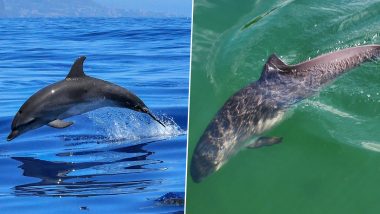In a first, a case of H5N1 avian influenza virus, more commonly known as bird flu, has been detected in a bottlenose dolphin in Florida and a porpoise in Sweden. This version of the virus has affected an unusually broad array of species across the world. However, these are the first ever documented cases of avian influenza in cetaceans, a group of marine mammals that includes dolphins, porpoises, and whales.
The spread of the virus is demonstrated both the risks posed to wildlife and provides a new opportunity for the virus to mutate and adapt, experts said. Bird Flu in France: 10,600 Ducks Culled After Detection of Avian Influenza at Duck Farm.
The male dolphin was recovered in March at Horseshoe Beach by the University of Florida’s marine animal rescue team. The dolphin had died just before the rescue. Its samples showed H5N1 in the dolphin’s brains and lungs, said the officials on Wednesday. Reportedly, the virus recovered from the dolphin belonged to clade 2.3.4.4b of the Eurasian H5 viral lineage.
A week ago, Swedish officials reported that they had found the same type of avian influenza in a stranded porpoise found in June.
“Shouldn’t be too surprised” that avian influenza has crossed to other species, given the scale of the outbreak this year. Dolphins, porpoises, and other cetaceans will be encountering dead or dying birds in marine and coastal habitats, and a proportion will interact with the carcasses and become infected themselves,” The Telegraph reported quoting Dr. Suggit as saying.
(The above story first appeared on LatestLY on Sep 10, 2022 09:59 AM IST. For more news and updates on politics, world, sports, entertainment and lifestyle, log on to our website latestly.com).













 Quickly
Quickly



















